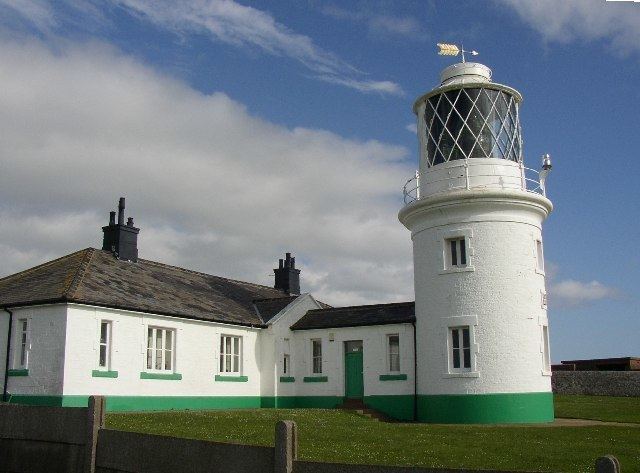Year first lit 1867 Focal height 102 m (335 ft) Opened 1718 NGA number 4892 | Construction stone tower Height 17 m Automated 1987 Year first constructed 1718 | |
 | ||
Tower shape cylindrical tower with balcony and lantern Markings / pattern white tower and lantern Similar Hilbre Island Lighthouse, Lynmouth Foreland Lighthouse, Berry Head Lighthouse, Farne Lighthouse, Cromer Lighthouse | ||
St Bees Lighthouse is a lighthouse located on St Bees Head near the village of St Bees in Cumbria, England.
Contents
History
The first lighthouse on the site began its life in 1718 on land bought by Trinity House, one of the UK's General Lighthouse Authorities. It was constructed by Thomas Lutwige, who paid a lease of £20 per year for the site. It stood 9 metres tall and was 5 metres in diameter topped with a large metal grate on which the lighthouse keeper would burn coal. To make money Lutwige levied charges of 3½ pence per tonne of cargo carried by vessels to nearby ports. In 1822 it was the last coal-powered lighthouse in Britain, when it was destroyed by a fire in which the keeper's wife and five children perished by suffocation.
In its place a light with 15 oil burners was built by engineer Joseph Nelson at a cost of £1,447 operating from 1823. This in turn was replaced by the current higher round tower in 1865 with two new dwelling houses for the keepers. The tower is 17 metres high and stands an average of 102 metres above sea level. In the interwar period the lighthouse was used as a turning marker in the London to Isle of Man air races. During World War II the local Home Guard used it to practise defence/attack strategies although there is no record of ammunition being fired at it. By 1987 it was fully electrified and automated, giving a beam of 134,000 candela which can be seen 18 nmi (33 km) away.
The fog signal was discontinued in 1987, and the detached building which housed the fog signal equipment now stands very close to the edge of the cliff. It used to sound two blasts every 45 seconds.
Construction
The foundation stone of the current tower was laid in a ceremony on 10 May 1865, with construction by builder John Glaister of Whitehaven. Civil engineer Henry Norris supervised the construction as resident engineer on behalf of Trinity House. Beneath the foundation stone a zinc box was laid containing a dated scroll signed by Henry Norris & John Glaister as well as by the others present at ceremony together with newspapers and coins of the realm.
The tower was built of local sandstone topped by a lantern that was originally destined for Gibraltar with the single lamp supplied by Messrs. W. Wilkins & Co., of Long Acre. The lighthouse was still under construction in late Nov 1866 when Henry Norris was sued by a painter in court in Whitehaven who had not been paid for lettering a notice board at the lighthouse.
